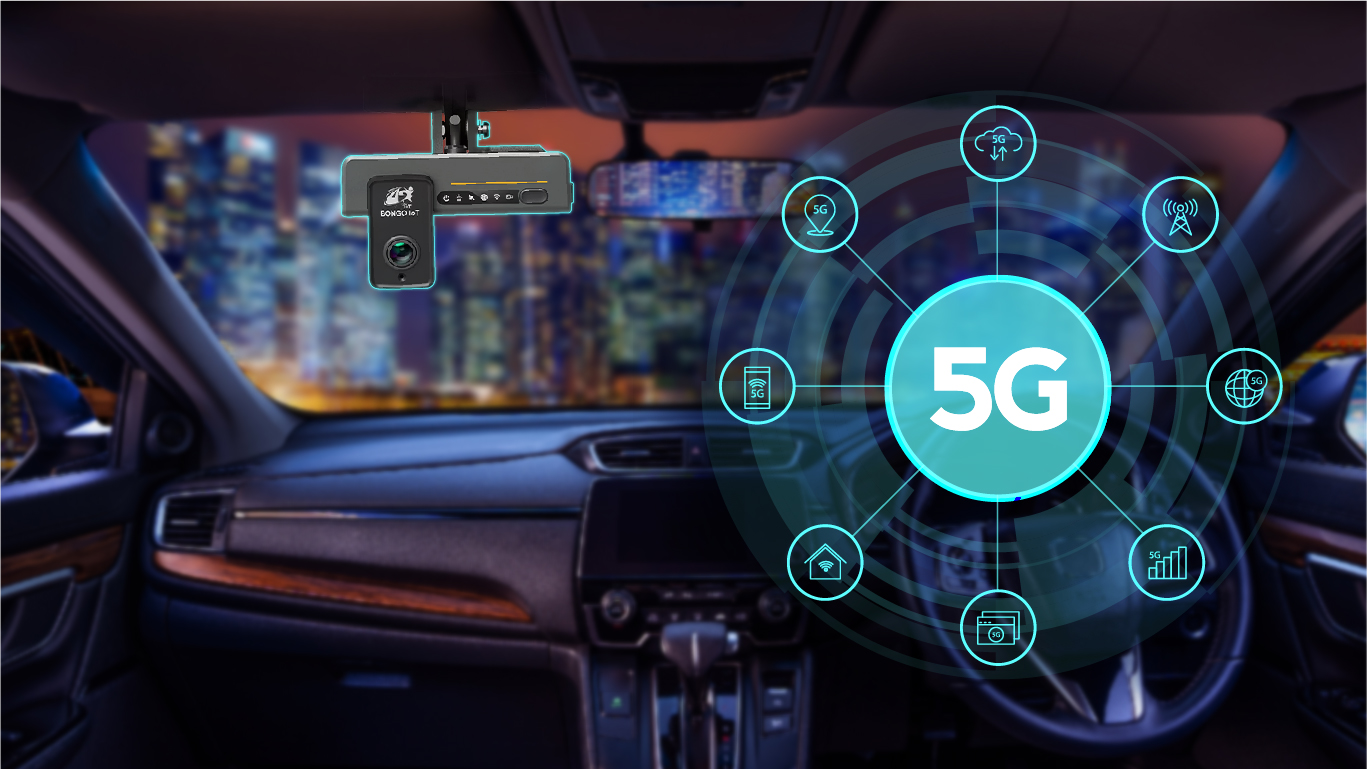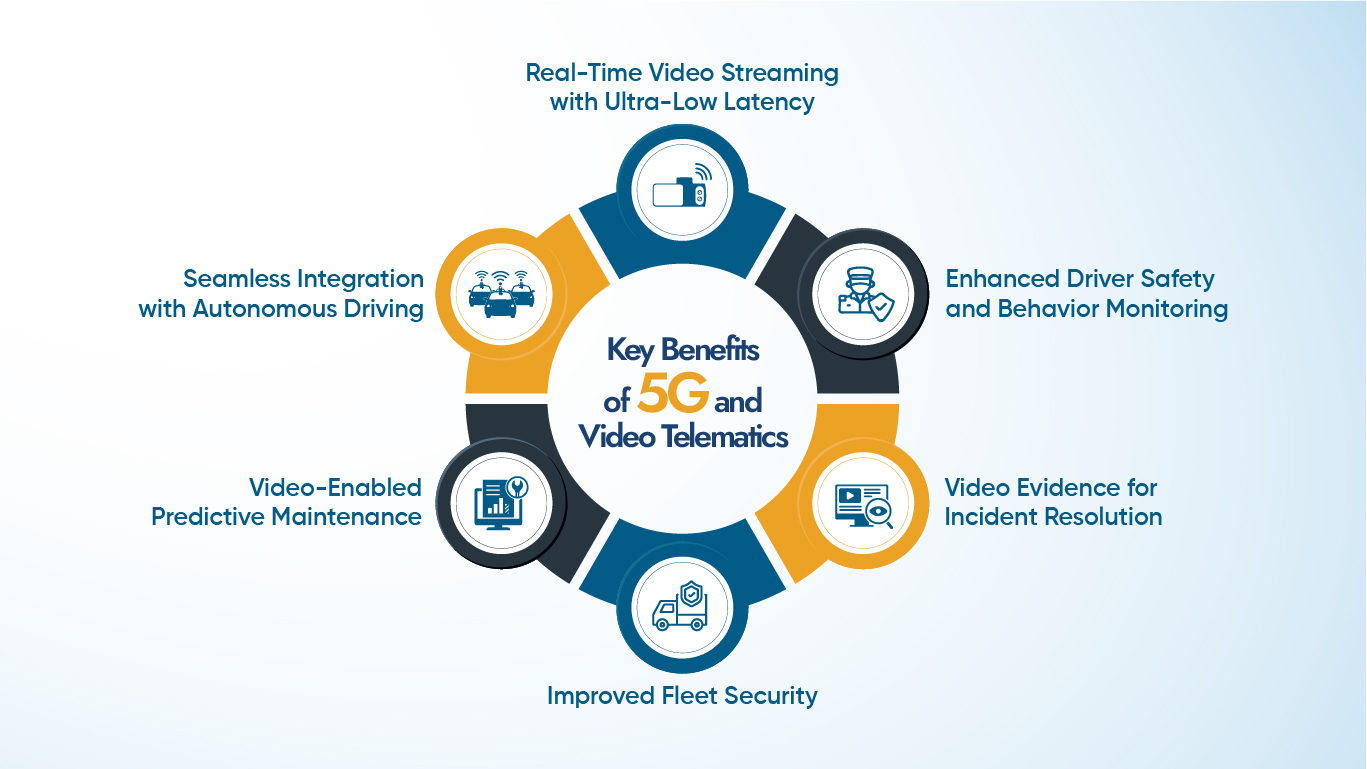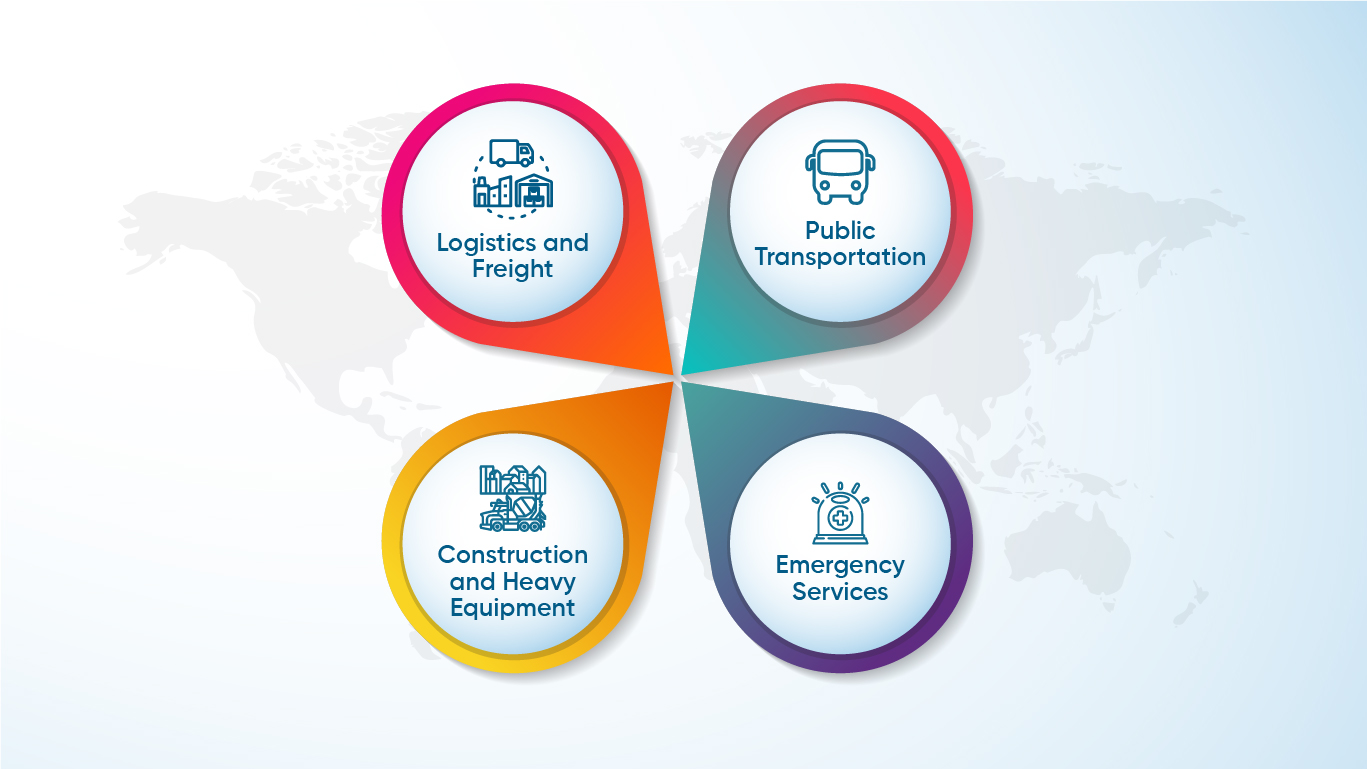%20S-01.jpg&w=3840&q=75)
Telematics has already revolutionized fleet management, providing businesses with critical data to optimize their operations, improve safety, and reduce costs. However, the advent of 5G and video telematics takes these capabilities to a whole new level. By integrating high-speed 5G networks and advanced video technology, telematics is evolving into a more powerful tool for fleet managers, enabling real-time video streaming, ultra-fast data transfer, and advanced safety measures. In this blog, we will explore how 5th-generation telematics is shaping the future of fleet management, with a special focus on the game-changing impact of video telematics.
What is 5G and Video Telematics?
5th generation (5G) telematics refers to telematics systems enhanced by 5G wireless technology, which enables faster data transfer, lower latency, and greater bandwidth. Telematics traditionally involves using GPS, telecommunications, and vehicle monitoring systems to track and collect data from fleets. With 5G, this process becomes faster, more accurate, and capable of handling much larger amounts of information in real time.
Video telematics integrates live video streams from cameras installed in and around vehicles with telematics data. These cameras capture real-time footage of the driver, passengers, and the surrounding environment. Combined with the power of 5G networks, video telematics becomes a vital tool for monitoring driver behavior, improving safety, and gaining deep insights into fleet operations.
Bongo IoT, a pioneer in telematics solutions, is the only company in Bangladesh that provides video telematics services. We are also expanding business into the Middle East, Europe, and Australia, offering advanced telematics solutions to international markets. This growth highlights the global potential of 5G and video telematics to transform fleet management.

Key Benefits of 5G and Video Telematics
1. Real-Time Video Streaming with Ultra-Low Latency
One of the most transformative aspects of 5G telematics is the ability to transmit live video streams with ultra-low latency. In previous telematics generations, data transfer delays could prevent real-time response to incidents. Now, fleet managers can view live video footage from inside and outside the vehicle, allowing them to monitor driving conditions, detect unsafe driving behaviors, and immediately respond to emergencies.
With real-time video streaming, fleet operators can take instant action during an incident, such as alerting authorities, providing remote assistance to drivers, or notifying customers of delivery delays. This immediate visibility is critical for maintaining high safety standards, especially for fleets operating in high-risk or time-sensitive industries.
2. Enhanced Driver Safety and Behavior Monitoring
Video telematics powered by 5G significantly improves the ability to monitor and correct driver behavior in real-time. Dashcams and onboard cameras capture live footage of drivers and their surroundings, which can be used to assess factors like driver distraction, fatigue, speeding, and adherence to safety protocols. With AI-powered analytics, the system can automatically detect risky behaviors like texting while driving, tailgating, or sudden braking.
In the event of an accident or near-miss, the system can provide video evidence that helps determine the cause of the incident and enables driver coaching based on actual footage. This improves accountability and helps reduce risky behavior over time. In addition, the integration of live video streaming with telematics data allows fleet managers to create custom driver scorecards, helping drivers improve their skills and safety on the road.
3. Video Evidence for Incident Resolution
The integration of video with telematics data is especially useful for fleet operators when resolving disputes or managing accidents. Video telematics provides indisputable evidence in case of collisions, theft, or traffic violations. With 5G networks, high-definition footage can be streamed and stored in real time, offering a complete record of incidents from multiple angles.
This helps with faster claims processing in insurance cases, protecting businesses from fraudulent claims and providing concrete evidence to authorities or insurance companies. In addition, fleet managers can review video footage in post-incident investigations to understand exactly what happened, enabling corrective measures to prevent future incidents.
4. Improved Fleet Security
5G-powered video telematics enhances fleet security by offering real-time surveillance of vehicles and cargo. Cameras installed inside the vehicle can monitor both the driver and passengers to ensure compliance with safety protocols, while external cameras keep an eye on the surroundings, protecting against theft or vandalism.
For fleets transporting valuable or sensitive cargo, live video feeds provide an added layer of security, giving fleet managers the ability to respond instantly if they detect any suspicious activity. The combination of GPS tracking and live video monitoring also helps in recovering stolen vehicles more quickly, making it easier to identify perpetrators and minimize financial losses.
5. Video-Enabled Predictive Maintenance
5G and video telematics systems can also help improve vehicle maintenance by combining real-time video feeds with traditional telematics data, such as engine diagnostics and fuel consumption. Cameras installed in critical areas of the vehicle, such as the engine bay or tire wells, can provide visual indicators of potential issues, such as leaks, worn tires, or mechanical problems.
This visual data can be combined with telematics data to trigger predictive maintenance alerts, allowing fleet managers to schedule repairs before a breakdown occurs. This minimizes vehicle downtime and extends the life of fleet assets, ultimately reducing operational costs.
6. Seamless Integration with Autonomous Driving
As autonomous vehicle technology advances, 5G and video telematics will be crucial in enabling fleets to transition to driverless vehicles. The high-speed, low-latency capabilities of 5G allow for instant communication between autonomous vehicles, traffic infrastructure, and fleet control centers. Video telematics will provide an added layer of safety by offering real-time visibility of autonomous vehicles’ surroundings, helping to detect obstacles, road hazards, and other vehicles.

With 5G telematics, fleet managers will have the ability to remotely monitor and control autonomous fleets, ensuring that they operate safely and efficiently. The combination of real-time video feeds and AI-powered analytics will enable better decision-making for autonomous route planning, accident prevention, and fleet optimization.
How 5G and Video Telematics are Impacting Key Industries
The impact of 5G and video telematics is being felt across a wide range of industries, including:
- Logistics and Freight: Logistics companies can benefit from real-time video feeds that monitor cargo conditions, ensuring goods are transported safely and on time. Video evidence also simplifies insurance claims for damaged goods or accidents, leading to faster resolution and lower operational risks.
- Public Transportation: Buses and taxis equipped with video telematics can enhance passenger safety by monitoring driver behavior, preventing accidents, and providing real-time video evidence in the event of disputes. Passengers also benefit from greater transparency and safety assurance.
- Emergency Services: Emergency vehicles like ambulances, fire trucks, and police cars can use video telematics to improve response times, monitor traffic conditions, and ensure safe driving behavior. Real-time video from inside the vehicle can also assist in managing medical emergencies while en route to hospitals.
- Construction and Heavy Equipment: Construction companies can monitor the operation of heavy machinery using video telematics, reducing the risk of accidents on job sites. Real-time footage can help fleet managers ensure that equipment is being used safely and efficiently, and prevent unauthorized use or theft.

The Future of Fleet Management with 5G and Video Telematics
The adoption of 5G and video telematics is paving the way for a more connected, efficient, and secure future in fleet management. As 5G networks become more widespread, we can expect to see even more sophisticated uses of video telematics, including autonomous fleet operations, deeper integration with smart cities, and advanced AI-driven analytics for fleet optimization.
Fleet managers who invest in 5G and video telematics now will not only reduce costs and improve safety but also gain a competitive edge by embracing a technology that is set to revolutionize the industry.
Conclusion
5G and video telematics are transforming fleet management by providing real-time video streaming, enhanced safety features, and faster, more accurate data transmission. By combining the power of 5G networks with video monitoring, fleet managers can gain unparalleled insights into driver behavior, vehicle performance, and overall fleet operations. Whether it’s preventing accidents, reducing operational costs, or improving fleet security, the benefits of 5th-generation telematics and video integration are reshaping how fleets operate today—and will continue to do so in the future.
And leading the charge in this telematics revolution is Bongo IoT, the only company in Bangladesh offering video telematics services. With its recent expansion into Europe, the Middle East, and Australia, Bongo IoT is making waves globally, showcasing the power of 5G telematics on an international stage.
🌐Discover more
Visit at:
https://www.bongoiot.com/video-telematics
Watch Video ->
https://www.youtube.com/watch?v=jOTG7KfSFLI
WhatsApp:
or,
Mail Us:
